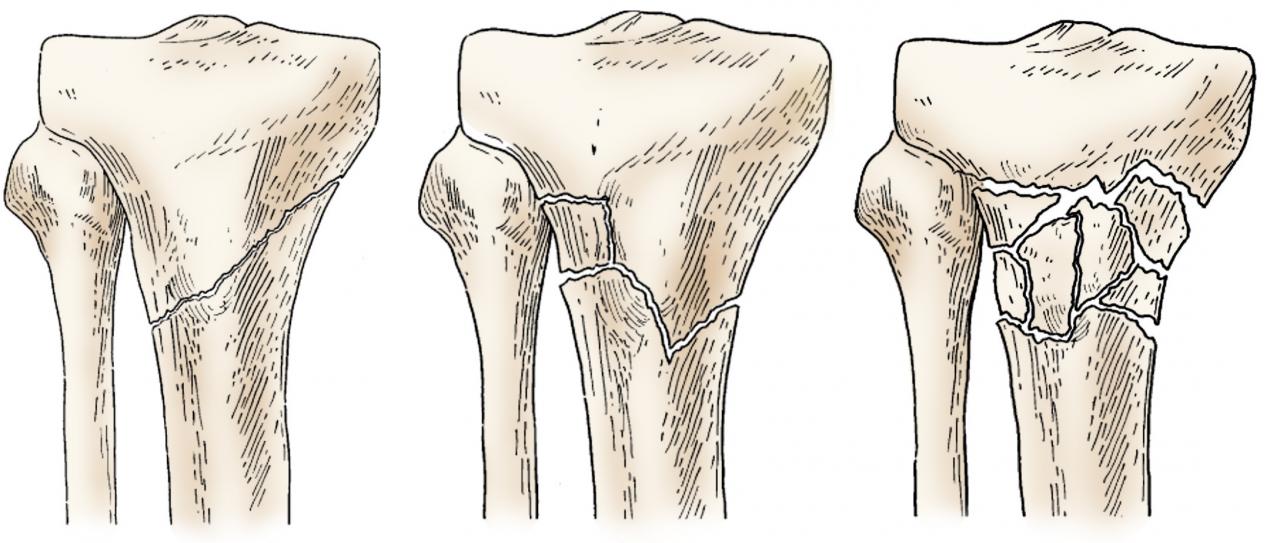Acute management of open fractures an evidence based review – Exploring the realm of acute management of open fractures, this evidence-based review takes a deep dive into the latest advancements and best practices in treating these complex injuries. From understanding the mechanisms of injury to outlining the principles of surgical repair, we’ll delve into the world of open fracture management, unraveling the intricacies of this critical aspect of trauma care.
In the realm of healthcare, the acute management of open fractures requires a meticulous approach, guided by evidence-based practices. As we delve into the nuances of this topic, it’s worth noting that managing a diverse workforce, like s an advantage of managing a diverse workforce.
, can bring invaluable insights to this complex field. By fostering an inclusive environment, healthcare professionals can harness the collective knowledge and experiences of individuals from various backgrounds, ultimately enhancing patient outcomes in the management of open fractures.
Acute Management of Open Fractures: An Evidence-Based Review

Acute open fractures are a common and devastating injury, posing significant challenges to orthopedic surgeons. This article provides an up-to-date review of the evidence-based management of these injuries, covering various aspects from prehospital care to definitive treatment and rehabilitation.
Acute management of open fractures is a complex and challenging topic that requires a multidisciplinary approach. Similar to how an organization is managed by three levels of managers, acute management of open fractures also involves different levels of decision-making and coordination.
3 levels of managers in an organization include top-level managers, middle managers, and first-line managers. In the context of acute management of open fractures, these levels could correspond to the surgeon, the emergency department physician, and the nurse. Each level has its own specific responsibilities and expertise, and effective communication and collaboration among these levels are essential for optimal patient outcomes.
Etiology and Pathophysiology, Acute management of open fractures an evidence based review
Acute open fractures are caused by high-energy trauma, such as motor vehicle accidents, falls, and gunshot wounds. The injury mechanisms involve significant force and disruption of the bone and surrounding tissues, including muscles, tendons, ligaments, and blood vessels.
Acute management of open fractures is a complex and challenging task. As we strive to improve outcomes, it is important to consider the 14 characteristics of an ideal performance management system . These characteristics can help us to create a system that is fair, accurate, and motivating.
By applying these principles to the management of open fractures, we can improve patient care and reduce the risk of complications.
Based on the Gustilo-Anderson classification, open fractures are categorized into three types:
- Type I:Clean wound with minimal tissue damage and contamination.
- Type II:Laceration or puncture wound with moderate tissue damage and contamination.
- Type III:Extensive soft tissue damage, comminution, and contamination.
End of Discussion: Acute Management Of Open Fractures An Evidence Based Review
In conclusion, the acute management of open fractures demands a comprehensive approach that encompasses prehospital care, definitive surgical intervention, and meticulous postoperative rehabilitation. By adhering to evidence-based guidelines and leveraging the latest advancements in wound management and infection control, we can optimize patient outcomes and restore function in these challenging cases.
User Queries
What are the common causes of open fractures?
Open fractures typically result from high-energy trauma, such as motor vehicle accidents, falls from heights, or industrial accidents.
As an acute management of open fractures, an evidence-based review shows that open fractures can be a bummer. But just like in performance management, there are certain characteristics that can make a system ideal. Check out these 15 characteristics of an ideal performance management system and you’ll be crushing it like a boss.
Open fractures might not be fun, but with the right approach, you can still come out on top.
How are open fractures classified?
Open fractures are classified based on the Gustilo-Anderson classification system, which takes into account the extent of soft tissue damage and contamination.
Acute management of open fractures requires a multidisciplinary approach, involving surgeons, nurses, and other healthcare professionals. This team approach is similar to the three levels of management in an organization 3 levels of management in an organization . The top level, responsible for strategic decision-making, is analogous to the surgeon who sets the overall treatment plan.
The middle level, responsible for implementing the plan, is similar to the nurses who carry out the surgeon’s orders. The bottom level, responsible for executing the plan, is akin to the other healthcare professionals who assist with patient care. This multidisciplinary approach ensures that all aspects of open fracture management are addressed, from initial stabilization to long-term rehabilitation.
What is the primary goal of prehospital management for open fractures?
The primary goal of prehospital management is to stabilize the fracture, control bleeding, prevent further contamination, and administer antibiotics to reduce the risk of infection.
What are the key principles of definitive surgical management for open fractures?
Definitive surgical management involves thorough wound debridement, irrigation, antibiotic administration, and fracture stabilization using internal or external fixation devices.
Understanding the acute management of open fractures requires a comprehensive approach, similar to the one needed for effective management in any field. Just like effective managers possess characteristics such as clear communication, adaptability, and decision-making skills, successful acute open fracture management involves meticulous assessment, prompt wound care, and appropriate antibiotic administration.
An evidence-based review of the acute management of open fractures emphasizes the significance of timely intervention. This aligns with the agile approach employed by a major hospital here . The hospital’s ability to adapt and respond swiftly to patient needs mirrors the principles of acute fracture management, where early stabilization and wound care can drastically improve outcomes.